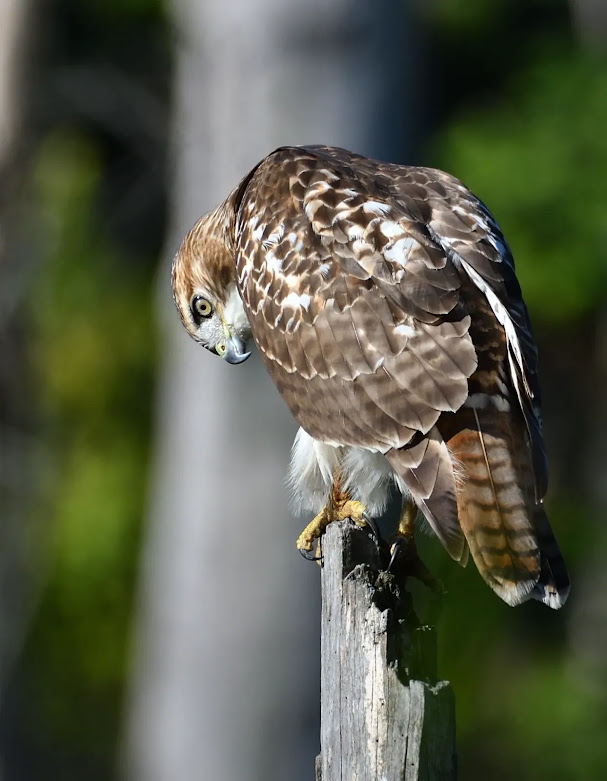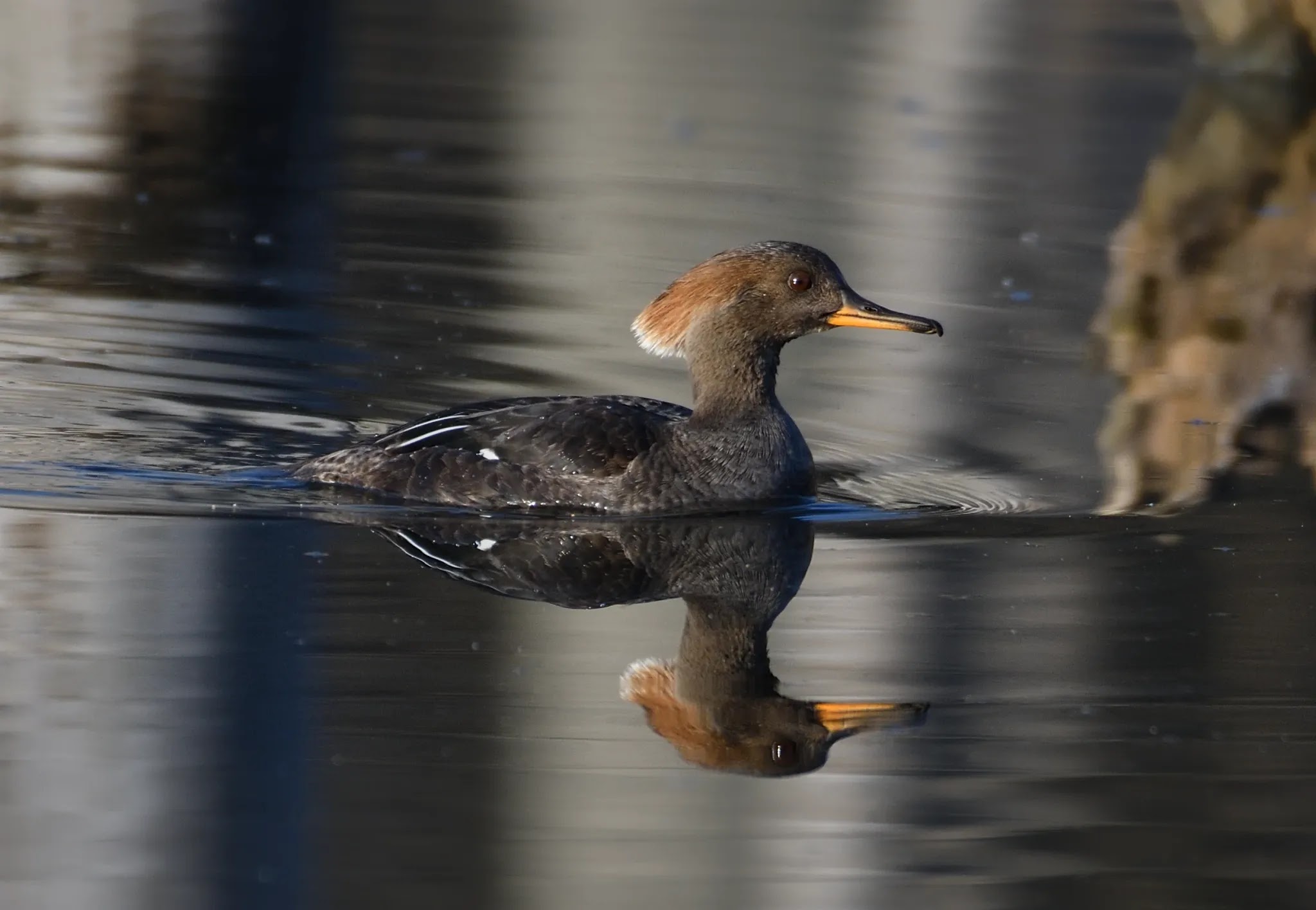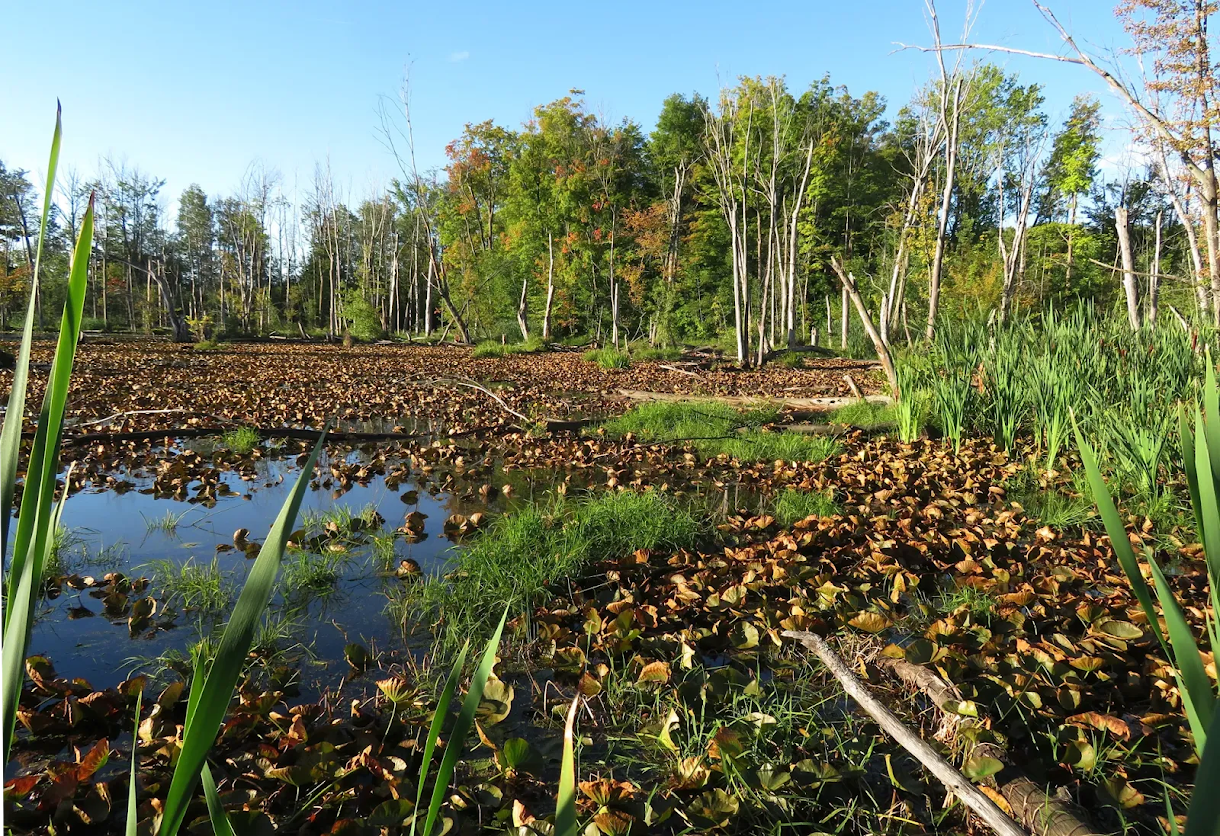A return to the Wetlands with a pair of rubber boots enabled me to go a little further than just the edge of the trees. An open vantage point surrounded by so many perches brought about the last animation in my previous post and also this photo of a red-tailed hawk.
Soaring wings in the distance caught my eye. The distinct shape of a turkey vulture, no more than a speck of black drifting in the wind, but it seemed to be moving closer.
I'd already stumbled upon the leftovers of an animal that had become victim to a predator and perhaps my clumsy rubber boots had scared off the predator before it could finish its meal. Surely the turkey vulture would not be able to detect the remains from that far away.
I was wrong. The turkey vulture closed in and circled around.
Before it finally came to rest on a dead tree stump right beside me!
Turkey vultures do not look quite as noble as hawks and eagles with the lack of feathers on their heads, but they really are very impressive up close. Larger than a red-tailed hawk and just slightly smaller than an eagle. As they predominantly feed on carcasses, the bald head is a necessary adaptation.
If you've ever wondered where a bird's ears are located, the turkey vulture's featherless head gives a clear view. Below and behind their eyes. The nares (nostrils) are also really apparent on turkey vultures. Larger than on other birds of prey as the turkey vulture's sense of smell is predominantly how they locate their food.
And now from one of the larger birds of prey to a diminutive falcon. Actually, two falcons working side by side.
Merlins are built for speed and maneuverability, and I would imagine that their quarry would be smaller than the birds that the red-tailed hawk targeted, but they were bold enough to harass birds like this red-bellied woodpecker.
They even dived several times at a pileated woodpecker in the trees on the far side of the water.
They took turns at strikes on a northern flicker.
As soon as one merlin came to rest the other merlin swooped in from its perch. I felt sure they were attempting to wear down the northern flicker into making a fatal mistake.
And then a family of blue jays arrived on the scene.
Blue jays do not appreciate the proximity of birds of prey.
These photos were taken at a distance and are somewhat lacking in detail, but hopefully, they still give a good impression of the dynamics of the chase.
A game of cat and mouse, but which was the cat and which the mouse was not clear.
The merlins certainly possessed the sharp claws, but the blue jays appeared to care less as they continued to bombard the merlins with attempted strikes.
The blue jays moved off into the woodland after unsettling the two merlins. The merlins gradually moved further out of camera range, swooping here and there at unsuspecting targets as they went. Leaving me to reflect on what had transpired and also on my first photos taken that morning of a group of egrets who have been visiting the wetlands.

But those photos will have to wait for another post ...Great Egrets
Copyright © scottswildencounters.blogspot.com 2020 Scott Atkinson All Rights Reserved.



















Comments
Post a Comment